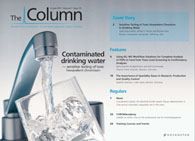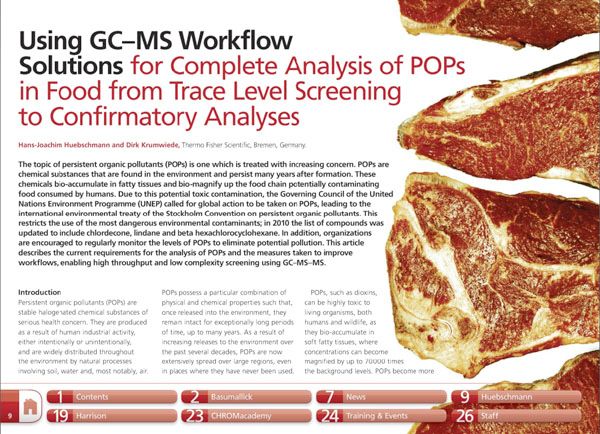Using GC-MS Workflow Solutions for Complete Analysis of POPs in Food from Trace Level Screening to Confirmatory Analyses
This article describes the current requirements for the analysis of POPs and the measures taken to improve workflows, enabling high throughput and low complexity screening using GC-MS-MS.
The topic of persistent organic pollutants (POPs) is one which is treated with increasing concern. POPs are chemical substances that are found in the environment and persist many years after formation. These chemicals bio-accumulate in fatty tissues and bio-magnify up the food chain potentially contaminating food consumed by humans. Due to this potential toxic contamination, the Governing Council of the United Nations Environment Programme (UNEP) called for global action to be taken on POPs, leading to the international environmental treaty of the Stockholm Convention on persistent organic pollutants. This restricts the use of the most dangerous environmental contaminants; in 2010 the list of compounds was updated to include chlordecone, lindane and beta hexachlorocyclohexane. In addition, organizations are encouraged to regularly monitor the levels of POPs to eliminate potential pollution. This article describes the current requirements for the analysis of POPs and the measures taken to improve workflows, enabling high throughput and low complexity screening using GC–MS–MS.

Analytical Challenges in Measuring Migration from Food Contact Materials
November 2nd 2015Food contact materials contain low molecular weight additives and processing aids which can migrate into foods leading to trace levels of contamination. Food safety is ensured through regulations, comprising compositional controls and migration limits, which present a significant analytical challenge to the food industry to ensure compliance and demonstrate due diligence. Of the various analytical approaches, LC-MS/MS has proved to be an essential tool in monitoring migration of target compounds into foods, and more sophisticated approaches such as LC-high resolution MS (Orbitrap) are being increasingly used for untargeted analysis to monitor non-intentionally added substances. This podcast will provide an overview to this area, illustrated with various applications showing current approaches being employed.
Study Examines Impact of Zwitterionic Liquid Structures on Volatile Carboxylic Acid Separation in GC
March 28th 2025Iowa State University researchers evaluated imidazolium-based ZILs with sulfonate and triflimide anions to understand the influence of ZILs’ chemical structures on polar analyte separation.













